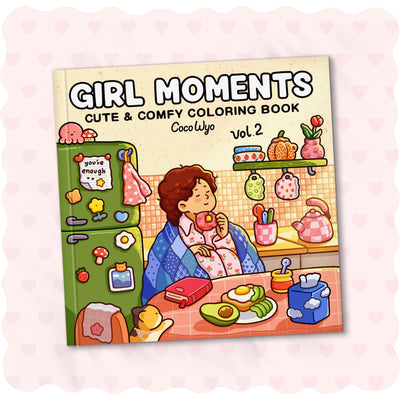Blue Color Meaning and Symbolism
Table of Contents
When you think of blue, what comes to mind?
Maybe a quiet ocean, a cozy sky at dusk, or that favorite old sweater you reach for on calm days.
The blue color meaning carries layers of peace, trust, and endless creativity, feelings that stretch gently across art, nature, and our everyday lives.
In this cozy guide, we'll explore what the color blue means, how it touches emotions around the world, and how you can use its magic to bring calm and connection into your creative moments.
The Different Shades of Blue and Their Symbolism

Blue isn't just a color, it's a feeling, a story, and a mood depending on which shade you choose. Each tint of blue carries a different kind of magic, ready to bring your creative ideas to life.
Light Blue
Like a soft morning sky, light blue brings peace, calm, and a touch of innocence. It’s perfect for scenes that feel dreamy, hopeful, and full of gentle emotions.
Royal Blue
Strong and bold, royal blue stands tall for loyalty, confidence, and strength. Use it when you want your art to feel empowering, majestic, or full of proud energy.
Navy Blue
Deep and thoughtful, navy blue speaks of wisdom, reflection, and timeless grace. It's a beautiful choice for serious, calming scenes that invite quiet thinking.
Turquoise and Teal
Fresh and lively, turquoise and teal mix the best of both worlds, the calm of blue and the energy of green. They’re perfect for playful, creative designs that sparkle with life and imagination.
Emotional and Psychological Effects of Blue
When we talk about the psychological effects of blue, it always comes back to how it so gently calms the heart and mind. Blue naturally slows the heart rate and eases breathing, making it one of the best colors for stress relief you can bring into your day.
Studies in color psychology show that even a soft glance at blue tones can create feelings of calm, safety, and inner focus. It’s like a quiet space you can carry with you, helping your mind stay clear during creative work or after a busy day.
Blue also carries a strong sense of trust and stability. That’s why healthcare centers, wellness brands, and peaceful workspaces often choose it not because it demands attention, but because it quietly reassures you that everything is okay.
Symbolic Meanings of Blue in Different Cultures

Blue carries powerful meanings across the world, shaped by history and tradition.
- In Western cultures: Blue often symbolizes peace, trust, and stability. It’s the reason police uniforms and medical scrubs are usually blue.
- In the Middle East: Blue is seen as a protective color, used to ward off evil spirits.
- In East Asia: Blue can represent immortality, renewal, and youthfulness in traditional beliefs.
- During the Renaissance: Ultramarine blue was so rare and precious that it was reserved for painting the robes of the Virgin Mary.
Blue in Branding & Marketing
Blue is a favorite in branding because it builds trust, calm, and confidence. It’s why you see it across finance and tech brands.
Facebook and PayPal use blue to create a sense of reliability and community. That familiar blue backdrop feels like a quiet promise: “You’re safe here.”
But blue isn’t perfect for everything. In food and fast food, it can seem cold and unappetizing, which is why you rarely spot it in burger chains or cafés!
How to Use Blue in Your Coloring Practice

Blue isn’t just a color, it’s the kind of calm you notice instantly.
Start with a Soft Blue Base
Use light blue to gently color the background of your page.
Think open skies, soft lakes, or a peaceful morning mist. It sets a calming tone and makes everything else feel cozy and anchored.
Add Depth with Navy or Deep Blues
Introduce navy blue around the edges or in shadowed corners.
It naturally pulls the eye inward and gives your artwork a sense of reflection, like twilight settling over a quiet field.
Mix Blues for Emotion
Layer different shades of blue to show feeling shifts.
For example, blend turquoise into ocean waves for playful energy, or fade into dark teal for a moodier, deeper vibe.
Pair Blue with Gentle Colors
Try matching blue with dusty pinks, sage greens, or soft beige tones.
These combinations create a balanced, soothing look, perfect for cozy scenes like gardens, bedrooms, or dreamy landscapes.
Pro Tip: Create Calming Gradients
Use a light touch to blend pale blue into deeper shades.
This simple technique creates a smooth, relaxing flow across the page, like watching the sky change at sunset.
🎨 Quick Blue Combo Ideas You’ll Love
Here are a few cozy color pairings to try:
| Blue Shade | Perfect Pair | Mood |
|---|---|---|
| Light Blue | Soft Pink | Dreamy, gentle, peaceful |
| Navy Blue | Warm Beige | Cozy, classic, relaxed |
| Turquoise | Sage Green | Fresh, lively, nature-inspired |
| Royal Blue | Dusty Lavender | Bold, magical, soothing |
FAQs
What is the meaning of blue in feng shui?
In feng shui, blue represents calm, healing, and wisdom. It’s often used to encourage peaceful energy and support personal growth, especially in quiet spaces.
How can you combine blue with other colors?
Blue pairs beautifully with soft neutrals like gray, adds elegance with gold or bronze, and feels fresh with blush pink or crisp white accents.
What is the spiritual meaning of blue?
Spiritually, blue symbolizes truth, protection, communication, and inner peace.
What does royal blue represent?
Royal blue conveys richness, vibrancy, and a sense of importance or celebration.
Is blue considered a lucky color?
In many cultures, blue is seen as a lucky color, symbolizing protection, peace, and positive energy. It’s often linked to new beginnings and safe journeys.
Why do people find blue so relaxing?
Blue mirrors nature’s most calming sights like clear skies and oceans, which psychologically lowers stress.
Is blue a sad color?
Sometimes in art and culture, blue can represent sadness or deep reflection, often called the “blue mood.”
Why is the color blue so rare in nature?
True blue pigments are extremely rare in the natural world. Many blue plants and animals, like butterflies or birds, actually create the illusion of blue through light reflection, not pigment. That’s why blue feels extra magical when we see it.











